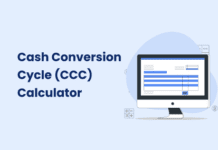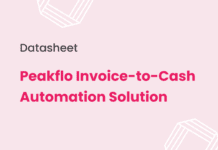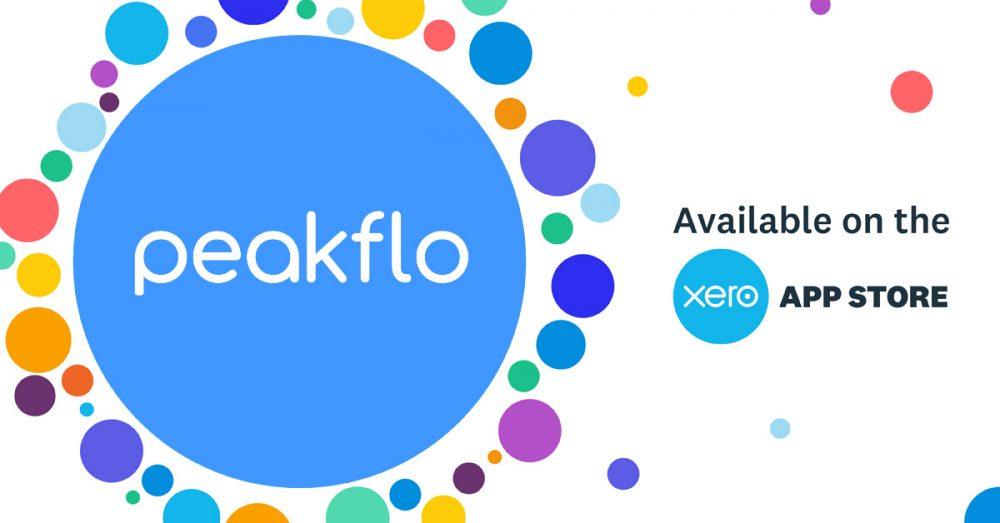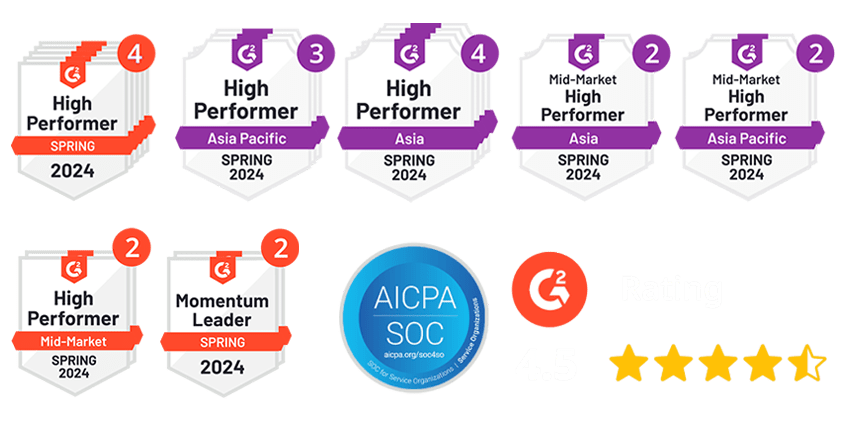Running a growing business means handling more orders, invoices, and payments. While it is exciting, managing it can also feel like a lot. Many organizations use several tools for different tasks, making keeping track of cash flow and orders difficult. Updating invoices, tracking inventory, and making sure payments are on time can quickly get confusing.
This is where custom integrations with Xero, a popular accounting software, can help. A custom integration connects Xero to other tools you use, so information flows smoothly from one tool to the next. Instead of manually entering the same data in different places, custom integrations do it automatically. This saves time, reduces errors, and lets you focus more on your business.
In this guide, we will explain how custom integrations make Xero work better for your needs. We will also look at top tools that help businesses such as yours manage finances more easily and efficiently.
Overview of Xero
Founded in 2006, Xero is a cloud-based accounting software that makes managing money easier for small and medium-sized businesses. It gives you a simple way to handle invoicing, payroll, expenses, and inventory all from one place. With Xero, businesses can keep track of their finances in real-time and quickly see reports and cash flow details.
One of the best features of Xero is that it connects with over 1,000 other apps. This includes tools for finance automation, customer management, e-commerce, and project tracking. These integrations allow businesses to customize Xero to fit their needs, making work faster and more accurate.
Businesses worldwide use Xero because of its reliable, cloud-based setup. It lets owners check their finances from anywhere, anytime. Xero’s powerful tools help companies stay organized and focus on growing their businesses, giving them more control and peace of mind.
Benefits of Xero Custom Integrations
Custom integrations with Xero help make work easier for businesses. They automate repetitive tasks, reduce errors, and give a clear view of finances. Here are the top benefits businesses get from using custom integrations with Xero:
- Saves Time on Repetitive Tasks
Entering the same data into multiple systems takes time and can lead to mistakes. Custom integrations automatically share data across platforms, so you only need to enter it once. This saves time and is a huge help for businesses managing lots of data, invoices, and payments.
- Keeps Financial Data Organized
Without integrations, financial data can get scattered across different tools. Custom integrations gather all this information into Xero, making it easier to track and manage. This way, businesses get a complete view of their finances without switching between systems.
- Cuts Down on Errors
Manual data entry often leads to mistakes. With custom integrations, data flows directly from one tool to another, reducing errors. For businesses, this means fewer invoice, inventory, or payment errors.
- Improves Customer Experience
Xero integrations help businesses serve customers faster and better. For instance, integrated payment tools let companies send invoices and receive payments quickly, smoothing transactions and improving customer satisfaction.
- Scales with Business Growth
As your business grows, handling more data can become tough. Custom integrations allow Xero to manage larger volumes of transactions and customer accounts without extra manual work. This flexibility is crucial for businesses planning to grow over time.
- Tax and Global Regulatory Compliance
Certain automation tools can streamline your tax compliance and reporting processes. These tools help you keep track of your taxes and ensure you follow laws, both locally and globally. They use smart systems to handle the hard work so you can maintain accuracy. By using this technology, you can avoid costly penalties from the IRS for not following the rules or making errors.
Customizing Xero Your Way: From Simple Add-Ons to Advanced API Integrations
When it comes to customizing Xero, businesses have many options. Each type of integration offers unique benefits, so it is about finding the one that fits your business best. Here are the main options for setting up custom Xero integrations:
- Built-In Xero Add-Ons
Xero provides a few add-ons that work directly within the platform. These add-ons cover basic needs such as payroll, expenses, and inventory. They are easy to set up and perfect for small businesses looking for simple solutions. However, they may not cover every need, especially as transactions grow.
- Simplifying Integrations with One-Click Connections
Solutions such as Peakflo make connecting with Xero easy with just one click. This lets businesses sync key financial data such as invoices, payments, bills, and customer details. It is great for organizations that want to automate their finances without needing any coding. By connecting directly with Xero, Peakflo saves time and makes financial tasks simpler.
- Middleware Solutions
Middleware tools act as a bridge, connecting Xero with more complex systems. These tools are ideal for businesses needing deep data exchanges between Xero and other systems, such as inventory management or vendor relationship management. Middleware often requires more setup, but it is worth it for larger businesses handling lots of data.
- Custom API Integrations
For businesses with unique needs, custom API integrations allow full control over data flow between Xero and other tools. This option requires a developer, as it involves coding, but it is the most flexible choice. Custom APIs let you create dynamic workflows that fit your business needs.
Top Custom Integration Tools for Xero
The right integration tool can help businesses handle invoices and customer payments without extra manual work. This section covers some of the best integration tools for Xero, each with unique strengths and features.
1. Peakflo + Xero integration: Put Your Finance Function on Auto-Pilot
Peakflo’s integration with Xero makes managing your accounts payable (AP) and accounts receivable (AR) easier and faster. It helps automate many tasks, saving time and reducing mistakes. This means your business can work more efficiently and have better control over its finances. Here is how this integration helps:
Empower Your Team with the Right Access
Controlling who sees what data is important for security and smooth operations. With Peakflo’s Xero integration, you can invite everyone in your company—sales, finance, or management—while making sure they only have the permissions they need.
- Customized Role-Based Access: You can set specific permissions based on each person’s role. Whether in sales, collections, or finance, they will only have access to the information they need to do their job. This helps keep sensitive financial data secure.
- Manage Notifications: You can customize how and when people are notified about updates. Choose between different channels such as WhatsApp or email for reminders, new invoices, or important updates. This ensures the right person gets the right information at the right time.
- Custom and Predefined Roles: Assign custom roles or use predefined ones such as Account Manager, Collections, or Admin. This makes it easy to set up access based on specific tasks and responsibilities and helps you keep track of who is doing what.
Peakflo Accounts Receivable for Xero Users
Managing accounts receivable is critical for keeping your cash flow healthy. With Peakflo and Xero working together, you can automate many tasks that involve getting paid.
- Send Payment Reminders Automatically: Set up automated reminders for customers who have not paid their invoices. This reduces the chance of late payments and makes your process smoother.
- Get Paid Faster: Automate tasks such as invoice sending and follow-ups. This can help you get paid up to 2x faster.
- Avoid Double Entry: Manually entering data into both systems can lead to errors. The integration removes this by syncing Xero with Peakflo, so data is entered once.
Peakflo Accounts Payable for Xero Users
Paying vendors is just as important as getting paid. With Peakflo and Xero, you can also automate many steps of the accounts payable process.
- Cut Bill Payment Time by 50%: Automate bill approvals, payments, and reconciliation to save time. With Peakflo, you can cut the time spent paying bills by half.
- Pay Domestic or International Vendors: Peakflo supports payments to local and international vendors. Whether your vendor is across the street or the globe, Peakflo handles it.
- Automate Approvals and Payouts: Set up automatic workflows for bill approval and payments. This ensures that the right people approve payments at the right time, and everything is recorded automatically.
All in all, For companies that want to make their finance operations simpler, Peakflo offers a flexible and easy-to-use solution that grows with them. This all-in-one setup makes Peakflo a top choice for businesses using Xero.
Click here to get Peakflo’s product tour now!
2. Xero CRM Integrations
A CRM (Customer Relationship Management) system is the main tool for managing customer information, such as contact details and communication history. Connecting your CRM to Xero keeps both systems up to date and ensures invoices are sent to the right people.
- HubSpot
The HubSpot integration with Xero lets users create and send invoices from HubSpot. It also syncs customer contacts between Xero and HubSpot using email addresses. Updates happen in real-time.
- Salesforce
Salesforce is another popular CRM. It connects to Xero through Breadwinner to sync data safely. This integration makes it easy to manage customer info, invoices, and payments. It keeps data updated in real-time.
- Mailchimp
Mailchimp integrates with Xero to keep contact info updated. Changes in Xero are reflected in Mailchimp. This is a one-way sync, so it is best for businesses that do not change customer info often in their CRM.
3. Xero Payment Gateways
Xero is an accounting tool that helps businesses manage payments, but it doesn’t process them directly. However, Xero can connect with popular payment gateways such as Stripe, PayPal, and Square. These integrations allow you to collect payments easily and keep your records up to date.
- Stripe
Stripe is a leading payment gateway that lets businesses accept credit and debit card payments online. With the Stripe integration, you can send invoices with a link for customers to pay using cards, Apple Pay, or Google Pay. Once paid, the payment is automatically recorded in Xero, and the invoice is marked as paid.
- PayPal
PayPal is one of the most well-known payment processors. When connected with Xero, your customers can pay invoices directly using PayPal. Once connected, payments will be automatically updated in Xero, marking the invoice as paid without needing to enter the information manually.
- Square
Square is another popular payment processor for both online and in-person payments. The Square integration with Xero helps businesses accept payments and automatically update their records in Xero. This syncs payment data, sales, and inventory in real-time, keeping everything accurate and up to date.
4. Xero Project Management Integrations
Project management platforms help teams stay organized and track their work. Connecting these tools to Xero ensures that project data and invoices are synced, making sure everything gets done on time. While Xero has limited integrations with project management tools, some options are available.
- Asana
Asana is a popular project management tool. However, it does not have a direct integration with Xero. To connect the two, you can use Zapier, a platform that links apps together. You will need to set up actions manually, such as syncing sent invoices from Xero to your Asana board.
- Trello
Trello is another tool for managing tasks. While there is no native Xero integration, you can use platforms such as Zapier to connect them. This allows you to automate tasks, such as syncing project updates and invoices, but it requires a little setup.
5. Xero eCommerce Integrations
Xero offers several useful tools for eCommerce stores using platforms such as BigCommerce and Shopify. These integrations help manage sales, revenue, and payments. Some connect directly to the eCommerce platforms, while others, such as A2X and Synder, focus on managing payments and reconciling accounts.
- Shopify
If you sell products on Shopify, you can connect your store to Xero using its built-in Shopify integration. This integration sends a daily summary of your sales to Xero at the end of each day. While it is easier than manually uploading data, it does not update in real-time, which some users find frustrating. The integration is free, but you will need a paid Shopify account.
- A2X
A2X is a tool that helps eCommerce businesses by automatically importing sales data from Shopify or Amazon into Xero. It handles payments and matches them with your bank account, reducing the need for manual work and making accounting more accurate. A2X is great for businesses that want to automate revenue tracking and payment reconciliation.
- Synder
Synder integrates with multiple eCommerce platforms, including Shopify and BigCommerce, to sync your sales data directly to Xero. It automates payment reconciliation and makes it easier to track fees and payments. With Synder, you don’t have to manually match sales transactions with your bank account, saving time and reducing errors.
6. Xero HR/Payroll Integrations
Finally, let us discuss three Xero integration tools to streamline HR and payroll management. These tools help automate payroll, manage employee records, and ensure compliance with tax regulations:
- Gusto
Gusto is a payroll and HR tool that works with Xero. It handles payroll, tax filing, and benefits management. Gusto makes sure your taxes are filed on time and keeps track of employee benefits. It automatically syncs payroll data with Xero, making accounting easier.
- Deputy
Deputy helps with scheduling, time tracking, and payroll. It connects to Xero, so when employees work, Deputy sends their pay information straight to Xero. This integration makes it easier to calculate wages and manage shift-based workers.
- PayHero
PayHero is a simple payroll tool for small businesses that works with Xero. It calculates taxes, prepares payslips, and helps with reporting. PayHero syncs everything with Xero, so your financial records are always accurate and up-to-date.
How to Easily Connect Apps to Your Xero Account: A Simple Guide
Xero provides two main options for connecting with other software, each designed for different needs:
- Add-ons
- Integrations
Xero add-ons are extra features developed and provided by Xero itself. On the other hand, integrations allow Xero to link with external, third-party applications.
Now that we have covered the difference, let us look at how you can easily connect apps to your Xero account.
The process is simple:
- Log in to Xero through either the desktop or mobile app.
- Click on your organization’s name and choose the App Store.
- Browse for the specific functionality you need (such as Bills and expenses).
- Select the app you want to connect with and click Get this app.
- Follow the on-screen instructions from Xero to complete the setup.
Conclusion
Setting up custom integrations with Xero can make a big difference for businesses that want to make financial tasks easier. With the right integration, you can save time, reduce mistakes, and get a clear view of your business’s finances. By automating important tasks such as invoicing, payments, and approvals, Xero integrations help companies to work more efficiently and focus on what matters most.
Of the options available, Peakflo is a top choice for Xero users. Its easy setup, strong customer support, and unique features make it a great fit for businesses that want to improve financial workflows. With Peakflo’s tools, managing accounts receivable and payable becomes simpler and more efficient.
Ready to see how Peakflo can transform your financial processes? Take a demo tour today to experience how it can help simplify and improve your business.









![Why AI Sales Calls Are Making Good Sales Reps Even Better [2025 Guide] ai sales calls](https://cdn-kmjmp.nitrocdn.com/YvtqmrsiHUxqerlSiZgbfzqqTARWTElr/assets/images/optimized/rev-834053b/blog.peakflo.co/wp-content/uploads/2025/09/65168cf6-3001-4733-8cbc-12d5684cf449-218x150.webp)

































